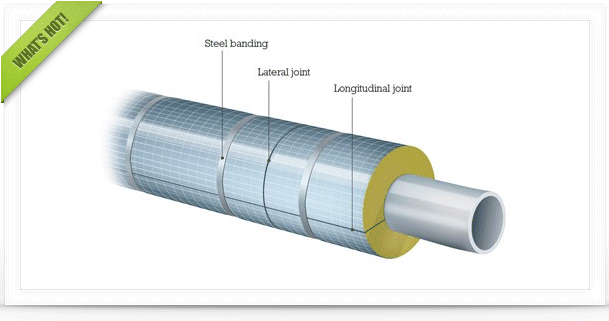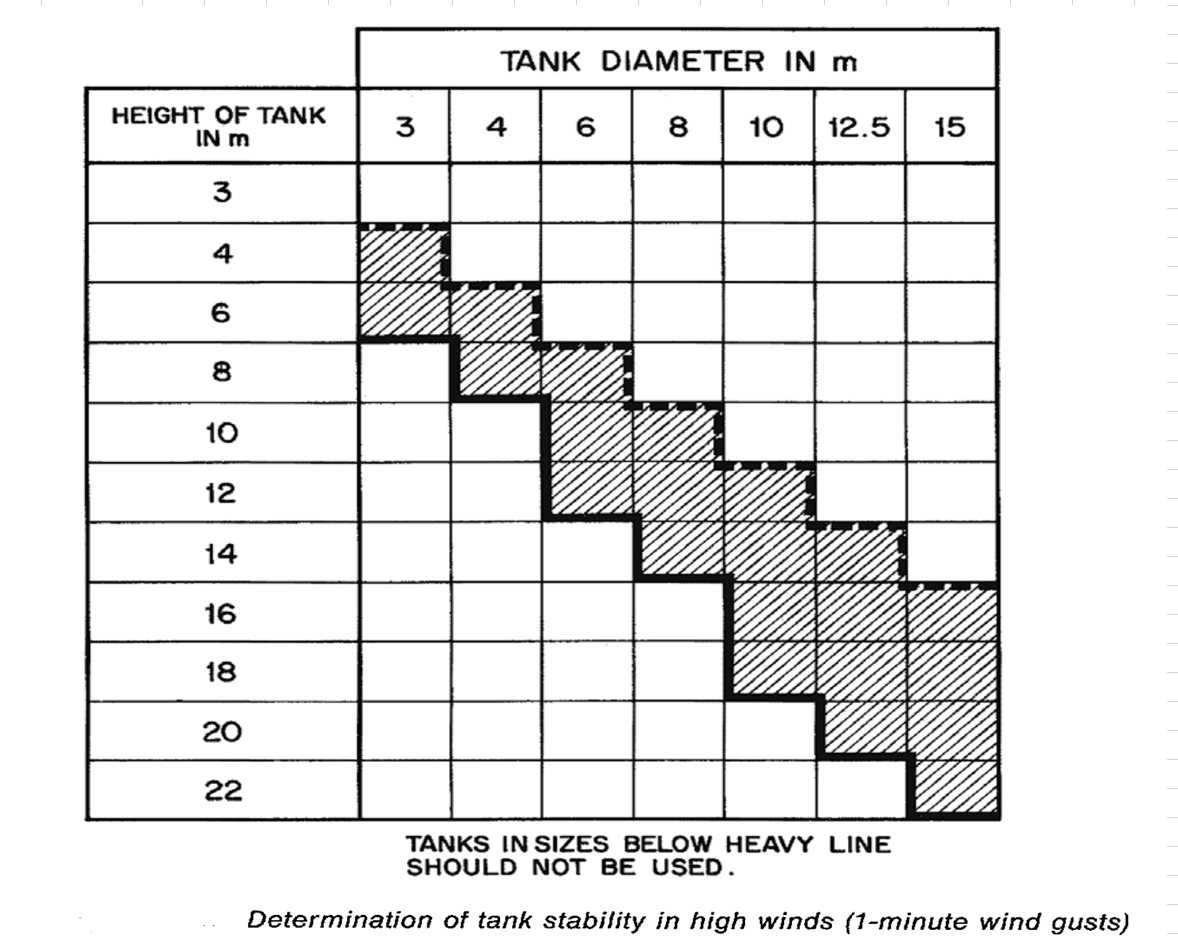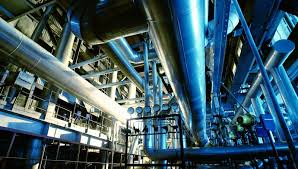Hey Everyone,
Does anyone know if there is certain criterion that needs to be followed for the application of deluge on vessels in an onshore facility? The current design we have for an LNG facility includes deluge for high risk vessels (definition of high risk a bit vague, mostly those which can not be reached with water monitors). The deluge is in addition to the blowdown system, paving, passive fire proofing and fire water hydrants and monitors, although I have seen that in some cases on onshore facilities with such measures as those stated above, the deluge is avoided due to minimum chances of escalation with the decks mostly grated and less chance of a pool fire accumulation. We have further adopted a 9m approach, i.e. that vessels are provided coverage up to 9m from the grade level as it seems to be industrial practice that a reach of a pool fire can only be up to 9m, probably from Shell? Does any one have any comments to what I have stated? Are you aware of any such 9m criteria and where it comes from? Has anyone worked on an onshore facility which has used deluge for equipment within the train apart from the LPG storage vessels?
|
|
Deluge In An Onshore Facility
Started by umar, Jun 02 2010 11:47 AM
3 replies to this topic
Share this topic:
#1

Posted 02 June 2010 - 11:47 AM
#2

Posted 05 June 2010 - 01:38 PM
1. I have met deluge system on above ground LPG or propylene spheres of high capacity (pressure storage of thousand m3), apparently due to the need of immediate response in case of fire. The system was applied in addition to fire fighting monitors & foam systems. Separate sprays rinsed vessel legs, not covered by the deluge system.
Thus almost whole external vessel area should be covered with water, which makes deluge systems suitable for spheres (rinse installed at North pole) and vertical drums. It seems to be an alternative to water spray system, the latter having more flexibility in vessel area coverage (with water). Purpose of both systems is to cool vessel walls in case of a near by fire.
2. An above ground LNG storage cannot be under pressure (CH4 critical temp = -82 oC); it will be (α) semi refrigerated or (β) fully refrigerated to atmospheric pressure.
2.1 Case (β) concerns cylindrical storage tanks of (say) 80 m diameter, double walled with intermediate insulation; so deluge systems may not be appropriate, see also http://www.angusfire...eId=404,00.html. Emphasis is given on foam sophisticated systems in order to quickly extinguish any spill fire.
2.2 Case (α) could adopt deluge (or spray) system to protect the sphere or drum, after the (spotted)deterioration of insulation by a near fire. However any event of spill fire should be rapidly detected and extinguished; this is the point emphasized at the LNG Fire Protection Reports (2003) in above mentioned URL. According to it, NFPA 11A is aware of foam systems used for prevention (vapor dispersion without yet fire) or fire protection. So I would stick to NFPA 11A and try to avoid deluge / spray system on LNG vessels, if this looks permissible, e.g. through passive fire protection means or peripheral monitors.
Please note that sprays are mentioned in LNG Fire Protection Reports (2003), but seem to mean water curtain on surrounding dike area rather than water rinse on vessel wall for cooling.
3. Reported 9 m from grade may have come from API RP520, recommending 25 ft above grade (or from any level fire can be sustained) to be considered for calculating wetted surface area in case of fire (but this should cover the level up to equator for spheres; for horizontal vessels it should be up to high level of max diameter; "Pocket Guide to Chemical Engineering" by Carl Branan - Gulf - 1999).
4. Hope above is somehow useful. More clarifications on storage kind, capacity and conditions may have helped for a more definite answer.
Thus almost whole external vessel area should be covered with water, which makes deluge systems suitable for spheres (rinse installed at North pole) and vertical drums. It seems to be an alternative to water spray system, the latter having more flexibility in vessel area coverage (with water). Purpose of both systems is to cool vessel walls in case of a near by fire.
2. An above ground LNG storage cannot be under pressure (CH4 critical temp = -82 oC); it will be (α) semi refrigerated or (β) fully refrigerated to atmospheric pressure.
2.1 Case (β) concerns cylindrical storage tanks of (say) 80 m diameter, double walled with intermediate insulation; so deluge systems may not be appropriate, see also http://www.angusfire...eId=404,00.html. Emphasis is given on foam sophisticated systems in order to quickly extinguish any spill fire.
2.2 Case (α) could adopt deluge (or spray) system to protect the sphere or drum, after the (spotted)deterioration of insulation by a near fire. However any event of spill fire should be rapidly detected and extinguished; this is the point emphasized at the LNG Fire Protection Reports (2003) in above mentioned URL. According to it, NFPA 11A is aware of foam systems used for prevention (vapor dispersion without yet fire) or fire protection. So I would stick to NFPA 11A and try to avoid deluge / spray system on LNG vessels, if this looks permissible, e.g. through passive fire protection means or peripheral monitors.
Please note that sprays are mentioned in LNG Fire Protection Reports (2003), but seem to mean water curtain on surrounding dike area rather than water rinse on vessel wall for cooling.
3. Reported 9 m from grade may have come from API RP520, recommending 25 ft above grade (or from any level fire can be sustained) to be considered for calculating wetted surface area in case of fire (but this should cover the level up to equator for spheres; for horizontal vessels it should be up to high level of max diameter; "Pocket Guide to Chemical Engineering" by Carl Branan - Gulf - 1999).
4. Hope above is somehow useful. More clarifications on storage kind, capacity and conditions may have helped for a more definite answer.
Edited by kkala, 05 June 2010 - 01:48 PM.
#3

Posted 06 June 2010 - 04:02 AM
Umar,
You should refer Section 10.3 of API STD 2510 for "fire water" application for LPG storage facilities. There are some pretty useful guidelines in there.
Regards,
Ankur
You should refer Section 10.3 of API STD 2510 for "fire water" application for LPG storage facilities. There are some pretty useful guidelines in there.
Regards,
Ankur
#4

Posted 14 June 2010 - 03:24 PM
Having found some more data, following may be of general interest for above ground LNG tank firefighting.
1. Local legislation does not require dikes for LPG storage. It seems true for LNG storage too, though not found in written texts. Potential LNG spillages should be directed through sallow channels to impound basin(s) in safe location. High expansion foam is used to control boil-off, or fire if ignition takes place (2 m3/m2/min).
2. Water contacting LNG will vaporize it, due to temperature difference (same if LNG falls into sea). So injecting water into fired LNG is not recommended (foam is). Nevertheless water can be used to cool walls of one LNG tank through sprays, in case of external fire (10.2 l/m2/min). Passive systems are also used to protect steelworks etc.
3. Applicable codes are NFPA 15 (NFPA 87 for any adjacent pier), or EN 1473.
4. I have been informed that a terminal of two LNG storage tanks (refrigerated storage) abandoned the system of fire fighting sprays. Thus codes seem to supply alternatives for fire protection / fighting (passive systems?). That is why fire fighting design had better stick to an approved code and look into all alternatives offered.
1. Local legislation does not require dikes for LPG storage. It seems true for LNG storage too, though not found in written texts. Potential LNG spillages should be directed through sallow channels to impound basin(s) in safe location. High expansion foam is used to control boil-off, or fire if ignition takes place (2 m3/m2/min).
2. Water contacting LNG will vaporize it, due to temperature difference (same if LNG falls into sea). So injecting water into fired LNG is not recommended (foam is). Nevertheless water can be used to cool walls of one LNG tank through sprays, in case of external fire (10.2 l/m2/min). Passive systems are also used to protect steelworks etc.
3. Applicable codes are NFPA 15 (NFPA 87 for any adjacent pier), or EN 1473.
4. I have been informed that a terminal of two LNG storage tanks (refrigerated storage) abandoned the system of fire fighting sprays. Thus codes seem to supply alternatives for fire protection / fighting (passive systems?). That is why fire fighting design had better stick to an approved code and look into all alternatives offered.
Similar Topics
Can Anyone Provide Me The Reference Datasheet For Deluge Valve?Started by Guest_Radha Krishnan Siva Kumar_* , 16 Apr 2024 |
|

|
||
Quantitative Risk Assessment Of Onshore Crude Oil PipelinesStarted by Guest_Mansi_* , 14 Feb 2024 |
|

|
||
Drain Box - Deluge WaterStarted by Guest_gleicecardoso_* , 28 Jul 2023 |
|

|
||
Process Facility CostingStarted by Guest_BabRafiq1_* , 23 Mar 2023 |
|

|
||
Deluge Valve Sov Getting Stuck Due To Fire WaterStarted by Guest_m.bhut_* , 29 Apr 2021 |
|

|

 FB
FB









